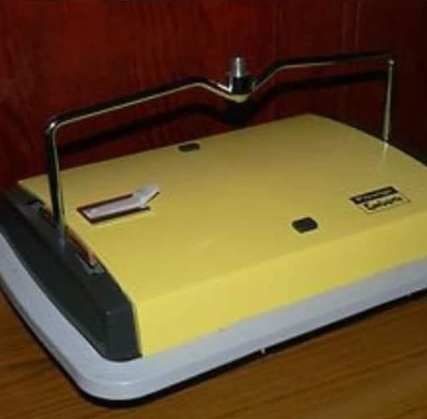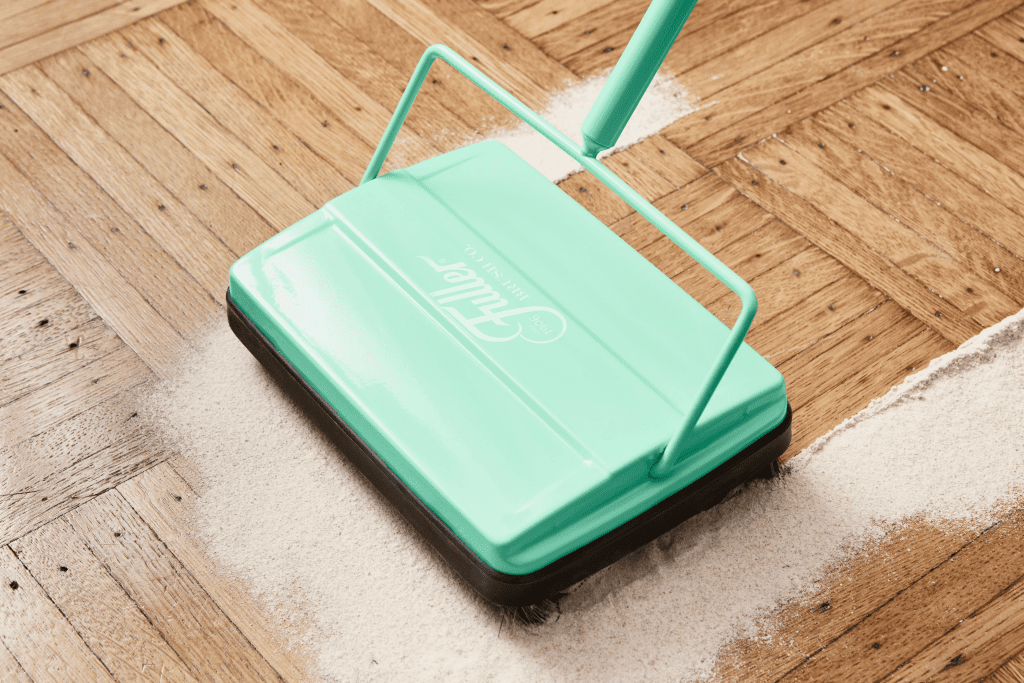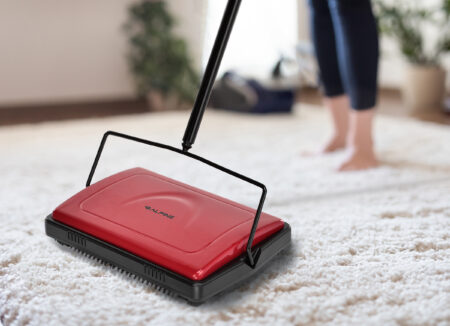Before the Industrial Revolution, most homes had wooden or stone floors that could be cleaned with brooms. As carpets and rugs became more popular and affordable, people needed a more efficient way to clean them. The traditional method of hanging carpets outside and beating them with carpet beaters was neither practical nor efficient. This led to the invention of the carpet sweeper, a revolutionary device that transformed home cleaning and paved the way for modern vacuum cleaners.
What Is a Carpet Sweeper?

The carpet sweeper is a simple yet effective mechanical device designed to clean carpets. It consists of a box, wheels, a long handle, and rollers equipped with brushes. As the sweeper is pushed across the floor, the rollers rotate, causing the brushes to lift dirt and debris from the carpet’s surface into an internal container. This lightweight, non-electric tool was a staple in homes before vacuum cleaners became widely available.
Why Carpet Sweepers Were So Popular
Carpet sweepers offered a significant advantage over manual carpet beaters. They were easier to use, more efficient, and allowed for quieter cleaning. Unlike early vacuum cleaners, which were heavy and required electricity, carpet sweepers could be used anywhere. This made them ideal for places like hotels, libraries, and hospitals where maintaining a quiet environment was essential.
The Birth of the Carpet Sweeper: Melville R. Bissell’s Invention
The invention of the carpet sweeper can be credited to Melville R. Bissell, a mechanically inclined businessman from Grand Rapids, Michigan. In 1876, he developed the first carpet sweeper to help his wife, Anna, solve a persistent problem in their crockery store.
The Story Behind the Invention
Melville and Anna Bissell owned a small crockery shop where they frequently dealt with sawdust used in packing fragile items. The sawdust would embed itself into the store’s carpets, making it nearly impossible to clean with a regular broom. Frustrated by the ineffectiveness of traditional cleaning methods, Anna asked Melville to devise a better solution.
Melville created a wooden box that was open at the bottom and equipped with wheels connected to a roller with brushes. As the device was pushed across the carpet, the rotating brushes picked up dust and debris, collecting it in a container that could be emptied when full. The sweeper worked so well that others soon took notice and wanted one for themselves.
From Home Invention to Commercial Success
Recognizing the potential of his invention, Melville patented the carpet sweeper in 1876 and began producing it commercially with Anna’s help.
The Early Days of the BISSELL Company
Initially, Melville and Anna operated a small-scale production. Local women made the brushes in their homes, and the Bissells assembled the sweepers in a room above their store. The couple then loaded the sweepers onto a horse-drawn buggy and sold them door-to-door, with Melville selling on one side of the street and Anna on the other.
Their carpet sweeper, named “Grand Rapids”, gained popularity quickly. It was lighter, more efficient, and more adaptable to uneven floors than competing designs. Unlike other sweepers, which created clouds of dust while cleaning, the Grand Rapids sweeper was effective without causing a mess. The success of the Bissell sweeper led to the opening of their first manufacturing plant in 1883.
Anna Bissell: The First Female Corporate CEO in the U.S.

After Melville Bissell’s death in 1889, Anna Bissell took over the company, becoming the first female corporate CEO in the United States.
Anna’s Leadership and Expansion
Anna was not only an astute businesswoman but also a fierce protector of the company’s patents. She expanded BISSELL’s operations internationally, ensuring that the brand became a household name worldwide. Her innovative approach to marketing and product development helped establish BISSELL as a leading manufacturer of cleaning solutions.
Anna led the company until her death in 1934 at the age of 87, leaving behind a thriving business that remained under the control of the Bissell family.
Innovations and Evolution of BISSELL Products
BISSELL continued to innovate long after the original carpet sweeper’s invention, adapting to changing cleaning needs and technological advancements.
Introducing the Gemini Sweeper and the Big Green Clean Machine

In the 1960s, BISSELL developed the Gemini Sweeper, a two-brush model that combined the effectiveness of a vacuum cleaner with the convenience of a mechanical sweeper. This innovation marked a significant step forward in home cleaning technology, offering improved dirt removal and ease of use.
By the late 1980s, BISSELL introduced the Big Green Clean Machine, the first deep cleaner that did not need to be connected to a water source. Known as “Big Daddy,” this self-contained unit allowed for more thorough cleaning without the hassle of traditional deep-cleaning methods.
Carpet Sweepers vs. Vacuum Cleaners
While vacuum cleaners have largely replaced carpet sweepers in most households, carpet sweepers still offer several advantages that make them relevant today.
Advantages of Carpet Sweepers
- No Electricity Required: Carpet sweepers are entirely mechanical, making them useful in places without access to power or where quiet cleaning is necessary.
- Lightweight and Easy to Use: They are easy to maneuver, making them an excellent choice for quick cleanups.
- Eco-Friendly: Without the need for electricity or disposable bags, carpet sweepers are an environmentally friendly cleaning option.
- Quiet Operation: Ideal for noise-sensitive environments like libraries, offices, and hospitals.
Why Carpet Sweepers Are Still Used Today
Although vacuum cleaners offer more powerful suction and versatility, carpet sweepers are still used in many settings where convenience, quiet operation, and eco-friendliness are priorities. They are also great for maintaining the cleanliness of small areas, like hallways, entryways, or low-pile carpets.
The Enduring Legacy of Carpet Sweepers
The invention of the carpet sweeper marked a pivotal moment in the evolution of home cleaning. Melville and Anna Bissell’s innovative spirit not only led to the creation of a household staple but also laid the foundation for one of the most recognized names in cleaning technology.
Conclusion: From Simple Invention to Household Name
The history of the carpet sweeper is a story of innovation, practicality, and perseverance. From its inception in 1876 by Melville R. Bissell to its rise under the leadership of Anna Bissell, the carpet sweeper has become a symbol of simple yet effective home cleaning. Even in today’s world of high-tech vacuums, the carpet sweeper remains a relevant and valuable tool, proving that some inventions never lose their charm—or their usefulness.


